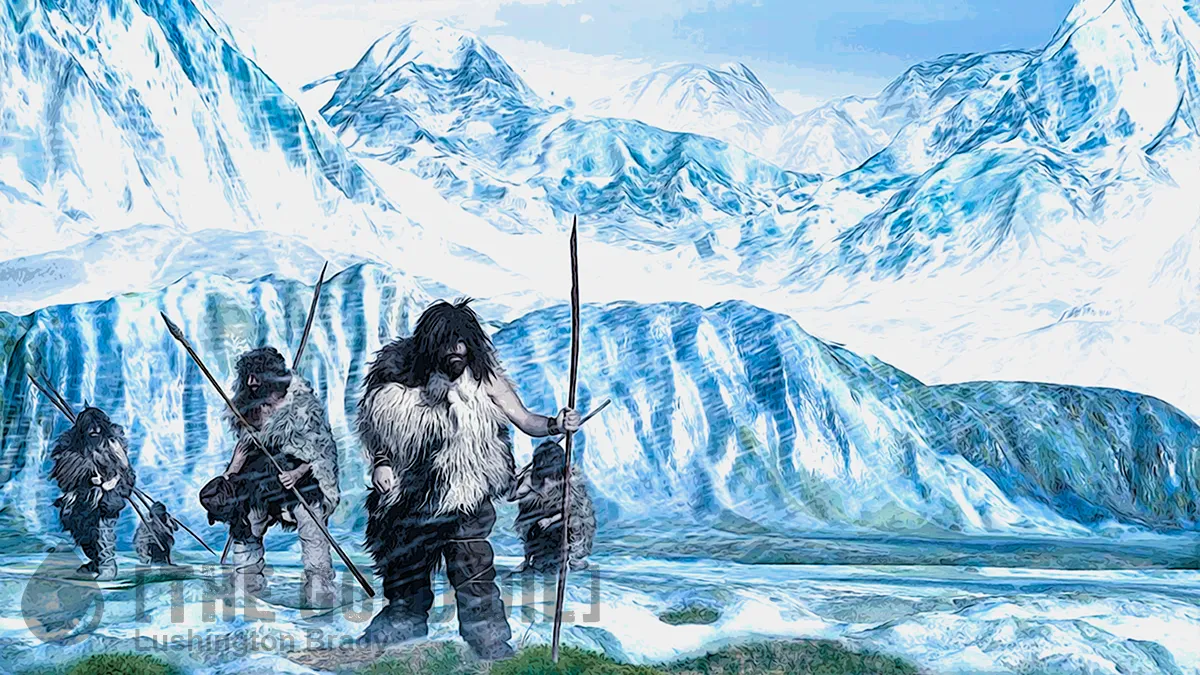Table of Contents
Science, no matter what the ‘experts’ might say, is never ‘settled’. Least of all the details of human evolution.
While the broad brush of the ‘descent of man’ has been well established for the last 50 years, there are still plenty of surprises in store: including the existence of so many previously unsuspected branches of the human family, for instance, such as Homo floresiensis (‘hobbits’) and the Denisovans. Or, more recently, the startling challenge to the firmly held belief that modern humans emerged in Africa.
Another strongly held belief was that early modern humans abandoned Europe during the last glacial period. Now, a new study suggests that they may have actually stayed put, adapting to the intense cold and ice in similar fashion to wolves and bears.
Previous studies have supported the view of most archaeologists that modern humans retreated into southern Europe during the height of the last ice age and expanded during the later increase in global temperatures. But our study is the first to use genetic data to show that at least some humans stayed in central Europe, unlike many other animals and despite our species having evolved in the much warmer climate of Africa.
How can genetic data shed light on such a question? Populations of the same species living in isolation in different environments will develop subtly different genetics to each other. The Tasmanian platypus, for instance, is notably genetically distinct from its Victorian cousins, from whom they have been isolated for tens of thousands of years (at least). Among humans, the Bajau of southeast Asia, adapted to living almost all their lives at sea, also genetically adapted to diving deeper, and for longer, than the rest of us.
Organisms which adapted to the climate of the European glaciation were no different.
Most of the studies in this field focus on individual species of animal or plant. They have shown that many species, including humans, expanded their geographical ranges since the height of the last ice age, approximately 20,000 years ago.
At this time, European ice sheets reached Denmark and south Wales. Europe was cold but mostly unglaciated, probably much like Alaska or Siberia today.
Our team's new study, led by Oxala García-Rodríguez at Bournemouth University, took a different approach and reviewed the genetic history of 23 common mammals in Europe. In addition to humans, these included rodents such as bank voles and red squirrels, insectivores like shrews and hedgehogs, ungulates like red deer and wild boar, and carnivores like brown bears and weasels.
In particular, the study focused on areas of Europe where today the greatest diversity exists. Areas of high genetic variation likely correlate to the longest occupation by a species. These areas are known as ‘refugia’, because they are locations where species retreat to survive when environmental conditions turn hostile. The mammals the study examined would have retreated to such refugia –likely the warmest or most abundant in food – at the height of the last glaciation.
The genetic patterns found indicate that many mammal species retreated to the warmer south, such as Italy and Iberia. As the ice retreated at the end of the glaciation, they expanded back north.
But we found a fourth pattern. Our study indicated some species (such as brown bears and wolves) were already widely distributed across Europe during the height of the last glaciation with either no discernible refugia or with refugia both to the north and south.
This pattern also included modern humans, Homo sapiens (Neanderthals were already extinct for 20,000 years).
Which raises the question of just why humans just didn’t flee south as well. Whatever the reason, they appeared able to able to tolerate the harsh ice-age conditions.
It is unclear whether these humans relied on ecological adaptation, for example the fact that they were omnivorous meant they could eat many different things, or whether they survived due to technology. For instance, it is well established that humans had clothing, built dwellings and controlled fire during the cold conditions of the last ice age.
This research has implications that make it more than just an academic curiosity.
For instance, it would demolish for good the recent and endlessly trumpeted conceit that Aboriginal Australians are ‘the world’s oldest living culture’. Already, several African peoples can easily dispute such a claim. If humans occupied Europe right through the last glaciation, Europeans may well have a claim that exceeds the arrival of Aborigines in Australia by a good 70,000 years.
Secondly, as the authors point out, it challenges many ideas of climate change and biogeography. Not least for humans. Because it shows that species have, and no doubt will, adapt well to even more dramatic episodes of climate change than anything we’re seeing in the modern era.









